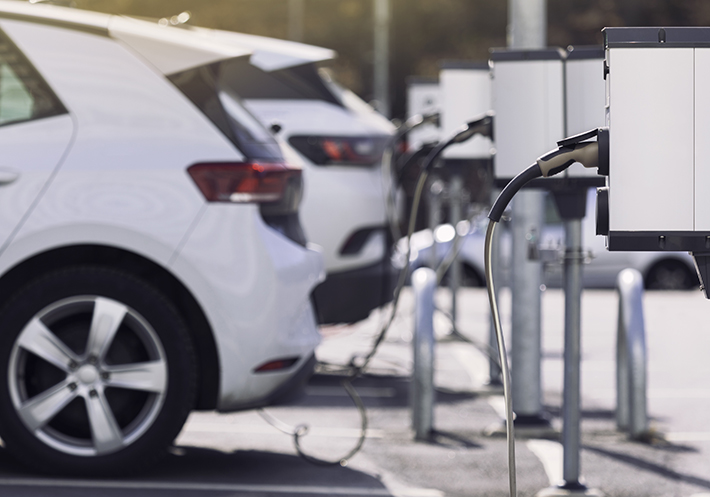
Electric Vehicle Standards Ease Range Anxiety and Overheating Concerns
Movie fans will remember the list of opponents from the “Rocky” franchise: Apollo Creed, Clubber Lang, and of course, Ivan Drago. With each competitor, Rocky Balboa overcame obstacles to prove he could go the distance. Much like Rocky, electric vehicle (EVs) are overcoming challenges in the marketplace to win over consumers and go the distance – challenges such as range anxiety, charging station availability, and more. Standards will help this effort along.
Pros and Cons
According to the International Council on Clean Transportation, more than 1.4 million EVs were sold in the United States in 2023. Today, the National Renewable Energy Laboratory predicts there will be 33 million EVs on the road by 2030.
While EVs are gaining in popularity, some consumers are hesitant to make the switch from gasoline to electric. The Department of Energy (DOE) reports the average range for all EV models in 2023 was 270 miles on a single charge. However, according to a 2023 survey conducted by AAA, 53% of respondents cited range anxiety as a primary barrier to purchasing an EV, and 56% cited lack of charging stations.
Overcoming Obstacles
ASTM International’s engine cooling committee (D15) has developed two new standards, with two more work items currently underway. They outline new testing measures and help ensure that coolants used in EVs prevent overheating, thereby helping to maximize range and minimize consumer concerns regarding scarcity of charging stations.
According to Dynamic Manufacturing, because EVs are powered by lithium-ion batteries, they achieve peak performance when the outside temperature is between 68 and 86 degrees Fahrenheit. However, when the outside temperature exceeds 90 degrees Fahrenheit, EVs experience a 2-5% drop in range, according to Michelle Lewis at Electrek. When the outside temperature reaches 95 degrees Fahrenheit, EVs can experience a 20-30% drop in range. Because the batteries used to power EVs are affected by outside temperatures, it is important that the coolants used in an EV help to reduce overheating.
Tom White, former senior policy analyst at the U.S. Department of Energy, explained how choosing the appropriate coolant and enhancing coolant standards and formulas can affect the performance of an EV.
“An updated coolant can more effectively help reduce the heat in an electric vehicle, optimizing its battery, thus easing range anxiety and helping performance.”
Standards Help Address Issues
This year, the engine cooling committee published the standard specification for glycol-based coolants for fuel cell electric vehicles (D8565) and the standard specification for glycol-based electric vehicle coolant with low electrical conductivity (D8566). In addition, the specification for waterless dielectric coolants for electric vehicles (WK80854) and the specification for waterless coolant for electric vehicles (WK87295) are being developed.
D8565 and D8566 apply to fuel cell electric vehicles (FCEVs) and EVs. Specifically, D8565 concerns the fuel cell stacks that come into contact with coolant in FCEVs, while D8566 aims to minimize potential harm in the event that coolant contacts the batteries.
Proposed standards WK80854 and WK87295 apply to non-aqueous coolants that will cover a dielectric coolant, insulating the electric components when directly contacted by coolant. They also concern new battery reconfigurations, accommodating vehicle range and charging infrastructure.
“The standards will help reduce range anxiety and the need for expanded charging infrastructure,” said Allan Morrison, AMT Consulting and member of the D15.26 committee. “They can also guide consumers in the selection of coolants when servicing their cooling systems.”
D15 will continue its standard development efforts in areas such as the performance of engine coolants or engine coolant systems products; performance of heat transfers in industrial systems products; and the performance of diesel exhaust systems products.
Good for Consumers and the Environment
The development of these standards will not only help assuage the concerns of consumers, they will help in the effort to reduce greenhouse gas emission, lowering carbon footprint and producing clean, sustainable energy.
“Many of these goals have been achieved, but not all,” says White. “This highlights the importance of R&D and the development of standards such as those developed by ASTM, to enable the success of new technologies and achieve the desired economic and environmental goals.”
Emerging markets can be much like Rocky in their need to overcome challenges on the way to victory. Standards can help in this effort.
Regan Daley is a communications intern with ASTM International.
 SN Home
SN Home Archive
Archive Advertisers
Advertisers Masthead
Masthead RateCard
RateCard Subscribe
Subscribe Email Editor
Email Editor